10 Easy Sensory Activities for Children with Autism
September 24, 2019
September 24, 2019
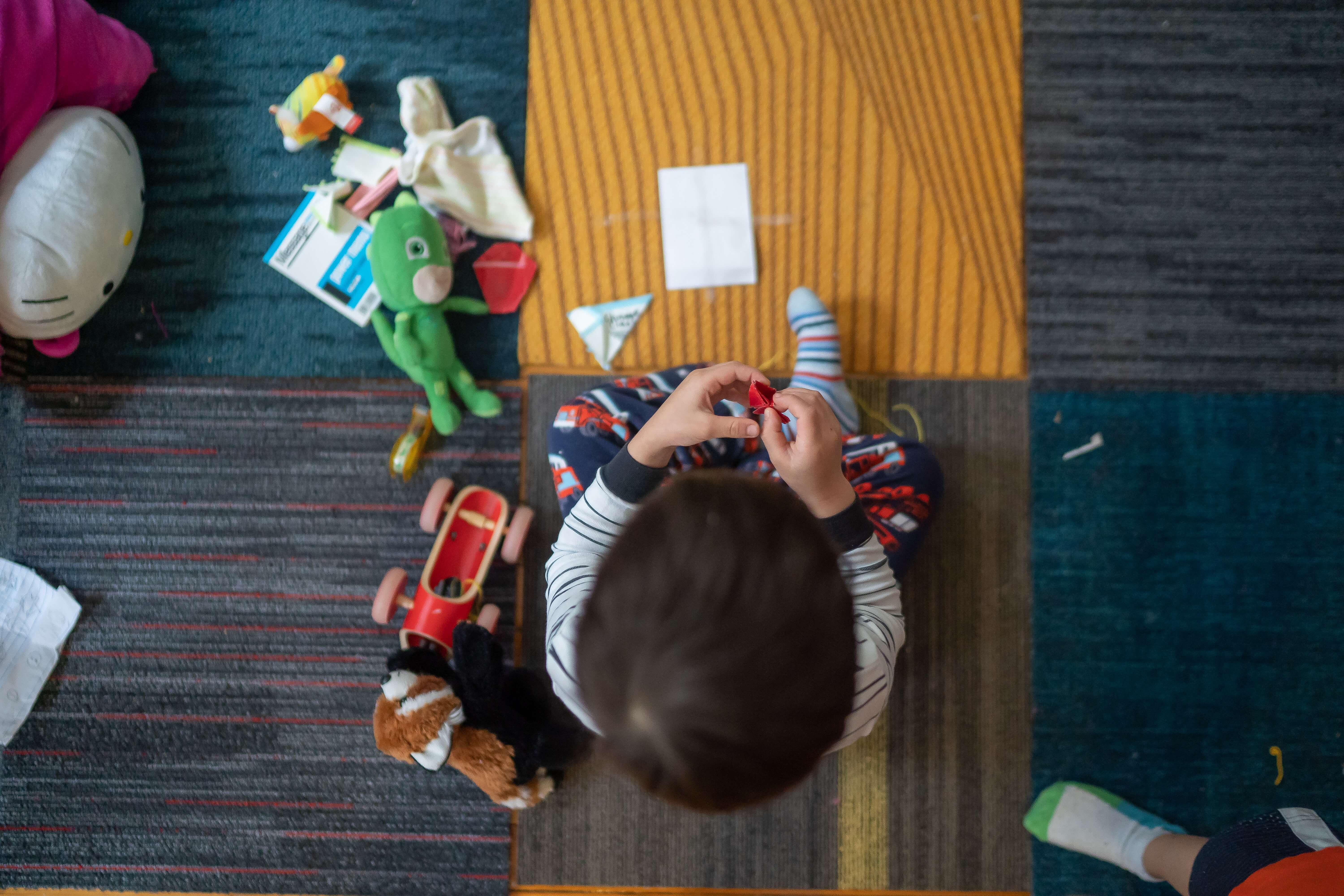
While siblings, friends and neighbors may be off to school and daycare, some children with autism spectrum disorder (ASD) may not yet have experience in a traditional classroom. What’s a parent to do when their child is home while others are at school? How can you keep them motivated, educated and entertained? Sensory play!
At Hopebridge, we strongly believe in learning through play, which is a key part of our ABA therapy programs. These activities provide great learning potential because they make education fun! Kids can develop their creativity while also enhancing cognitive development and functional skills.
Many kids participate in sensory-related activities from a young age, but for children on the spectrum, it can be especially beneficial. By joining in these activities, children with ASD, sensory processing disorder (SPD) and other challenges with stimulation are often able to train their brains to alter the response. In doing so, it can strengthen self-regulation and help them cope with reactions to touch, sound, scent, sight, movement, and even taste.
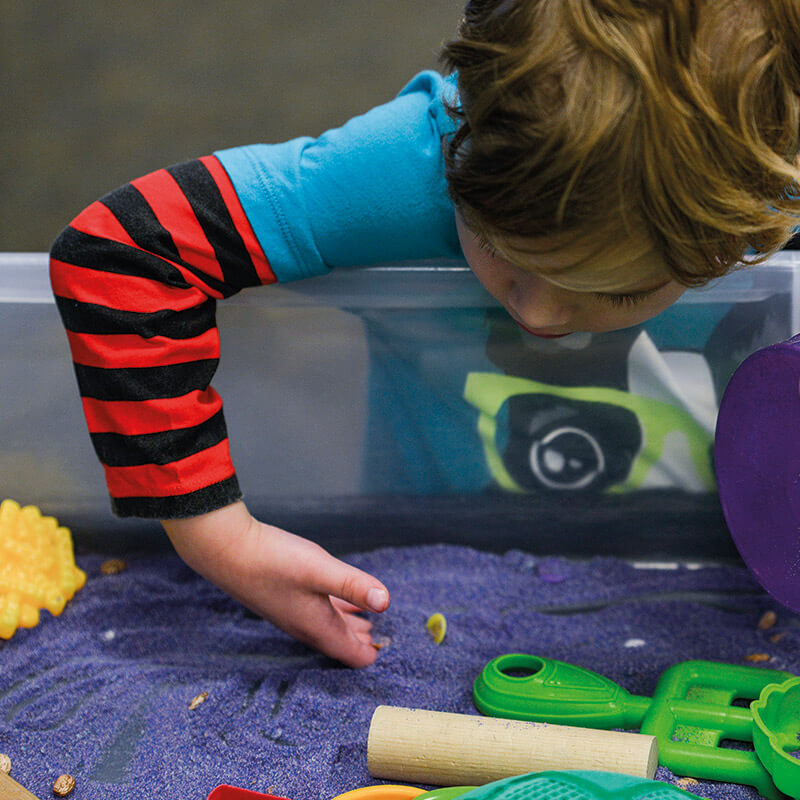
To help you create your own sensory play space at home, we compiled 10 easy sensory activities you can construct with items from your kitchen, playroom and backyard. Good for toddlers to tweens, these projects cover a range of skills, and you may even find yourself excited about them too!
You’ve probably seen tons of recipes and ideas on Pinterest on how to make your own slime, putty and finger paints, but not all of us have the time, patience or ingredients to make them work, so we tried to focus on simplicity. That doesn’t mean there’s no cleanup, of course … most of these (ok, all) can still get kind of messy, but we also have tips on how to keep them contained.
A few tips before you get started:
1. Window painting with shaving cream
Grab a can of shaving cream and head outside (inside also works if you do not mind the cleanup). To start, plop a good amount of shaving cream onto the window. If age-appropriate, you let your child take a turn at spraying it too. Together, practice writing letters, drawing pictures or just swirl your fingers around. Place some in their hands and have them press it to the window to experience different feelings. If inside, the sunlight shining through can create a different tactile experience. Bonus: you now have your very own window-washer! Have a towel ready and the cleanup for this one will be quick.
Skills and benefits: Working on the tactile senses, this activity also builds fine motor skills like hand-writing. If you allow your child to spray the can, you also have the opportunity to work on taking turns.
2. Pouring station
Here’s a fun, free activity that can entertain for a while. If you have one, lay a shallow plastic bin on the floor, otherwise you may want to move this activity outdoors. Search your cabinets for a bunch of containers in varying sizes and shapes you can place inside: measuring cups, plastic drinking cups, pitchers, bowls, funnels, ice cube trays, etc. An eye-dropper is a fun addition if you have it. Pour water into some of them, along with a bit of food coloring in a few, and let the fun begin. Encourage your child to pour from one into another, mixing and diluting colors. This works well on a patio or in an empty bath tub, but also indoors – on top of several towels! – if you’re brave. Talk about the colors changing and capacity of the containers when (not if!) there is overflow or spillage.
Skills and benefits: A pouring station is great for increasing attention span and concentration. It helps with fine motor skills through hand-eye coordination and balance, plus gives them the chance to build a real life skill of pouring.
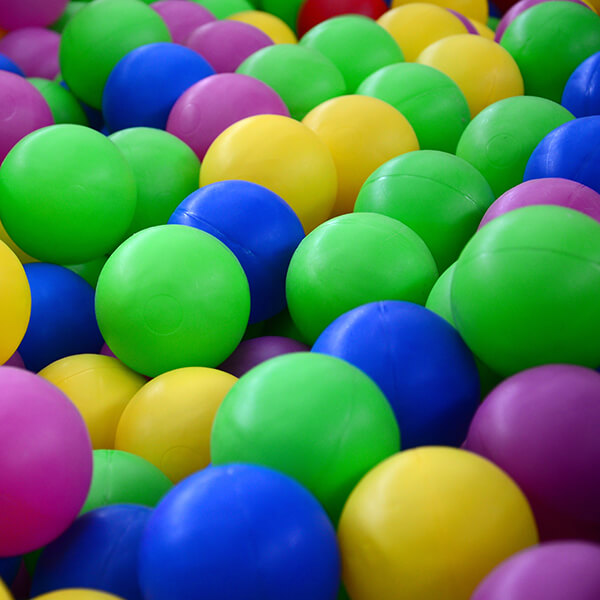
3. Ball pit
This one is not as cheap as the others because you will have to go to the store for this one if you do not already have the plastic balls, but the good thing is, you will get use out of it over and over! Depending on the size of your child, you will need about 200 to 500 balls. Now for the “pit” – a blow-up pool, tent, giant box and even specially designed memory foam options just for this purpose! Pour in the balls and let your kid dive in to “swim” around. Talk about the colors, shape and texture. You can even make two “pits” and practice throwing the balls from one or the other. The possibilities are endless.
Skills and benefits: Does your child wear a compression vest or weighted blanket? A ball pit is a great alternative for compression. The balls apply tons of pressure points and serves as a mini massage. Beyond sensory, the ball pit offers opportunities to work on gross motor skills, communication and socialization, depending on how you interact with it.
4. Sensory walk
You will need a few shallow plastic tubs, best placed outside on a patio or open sidewalk. Fill each one with items of different, yet comfortable textures your child may like to experience. Ideas include pom poms, cotton balls, sand, shaving cream, water beads, dry lentils, feathers, dry leaves and water. Use however many you like, but consider starting small if your child is leery about certain textures. You may want more than one bin of water – in various temperatures and colors – to place in between the “sticky” materials like shaving cream or sand, and you can place a towel down as one of the “steps” too. Encourage your child to step from bin to bin, exploring what is in each. Take a turn yourself and talk about what it feels like. If verbal, encourage them to do the same.
Skills and benefits: A twist on the typical sensory bin, this one is all about the senses! It can also aid in coordination and balance when stepping between each.
5. Plastic bag kites
Forgot your reusable bags last time you went to the grocery store? Or have too many left over from the last trips for takeout? Here’s an activity for you! All you need is a bag and 1-2 feet of yarn, twine or other type of string. Tie it to the handles of the bag so it acts as an extension they can hold onto. You do not want the string to be too long, as the kites work better to catch the draft behind your kiddo rather than flying high. Head outdoors, tell them to hold onto it and run!
Skills and benefits: It gets your child moving in a constructive way; working on gross motor skills. Your child will also experience the senses through the sound, touch and feel of the wind hitting the bag.
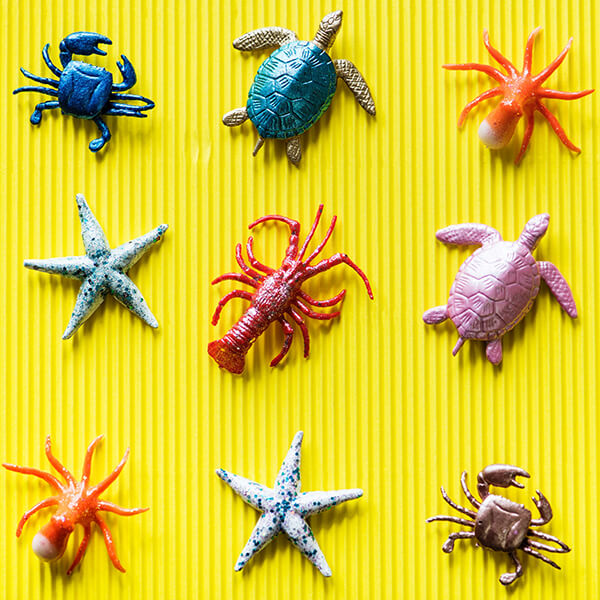
6. Underwater scene
First, you and your child will need to go on an outdoor scavenger hunt. Collect some stones, rocks and shells in various sizes. Sand, soil and leaves are also good additions. Once coming back inside, have your child arrange the findings in a plastic pin however they want; the stones and sand can be stacked into a pile or distributed evenly another bottom … it’s their underwater world! If you have some little water-safe toy sea creatures (plastic figurines, bath toys, pool toys, etc.), have your child add them to the scene. Fish, turtles, sharks and mermaids are some of our favorites. Then use a measuring cup to fill it with water, little by little to see what it does to the little world they created. Move it around to create some waves and help the fish swim around. As always, talk about what’s happening, and a great follow-up would be to read a story that takes place in an ocean, lake or pond.
Skills and benefits: In addition to introducing them to various senses, creating a new environment keeps your kiddo active, exploring the outdoors, experimenting like a scientist and engaging in pretend play.
7. Shape sorting
Start with any sort of large bin or roasting pan to fill with dry beans, rice or noodles. Add some small, distinguishable items, such as large buttons in various shapes or multicolor pom poms. Next, encourage your child to scoop up or fish out the new shapes with tongs or their fingers and place them into a muffin tin or ice cube tray. You can leave it open-ended or encourage them to short by color or shape. Soft, silicone-tipped kitchen tongs are great for this, but you can also get some smaller plastic, more kid-friendly tools like these.
Skills and benefits: This practice is excellent in strengthening fine motor skills. It works the muscles in those little fingers, hands and wrists, as well as works on hand-eye coordination.
8. Edible sensory bin
This one can be messy, so be prepared with a tablecloth and dress your child in an old t-shirt or smock. Pick one or two fun foods for your child to play with and put them in plastic bowls or a roasting dish to create a more controlled environment. Some of our favorite foods to experiment with (across a range of “messiness”) are canned cranberry sauce, mashed avocado, cooked rice, corn flakes and shredded coconut. Let your child smear the foods around in the dishes like finger paint.
Skills and benefits: This is a safe sensory activity for children who want to put everything in their mouths. It can also be beneficial for children who are limited in their tastes because it can help loosen the fear around food and introduce them to new textures.
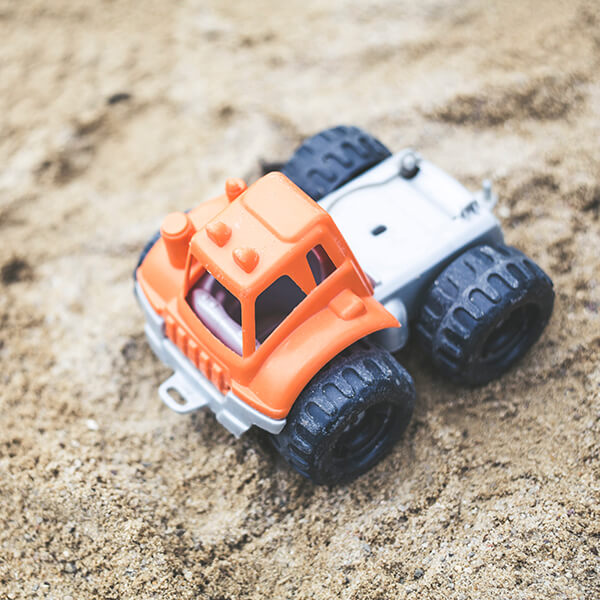
9. Construction site
To begin, you will need a small plastic pool or a shallow plastic bin or box. Next, fill it with your construction site’s “land.” If you have a paper shredder, this can be a great use for all that shredded paper, otherwise crumpled and torn tissue paper or sand can also work. All that is left is your “crew” of construction trucks, excavators, diggers, dump trucks and bulldozers. Don’t have trucks? You can also add in some blocks to add to the game. Discuss what you might be building and the actions the trucks are taking. Make sounds you might hear on a construction site and see if your child reciprocates, then mimic the noises they make.
Skills and benefits: Imaginative play is key for this sensory activity, but it can also be a great building block to vocalization and peer play. Depending on which toys and materials you use, it can also help with responses to various sounds and touch.
10. Wiggly shapes
Those of us from the ‘90s may remember Jell-O Jigglers… this is basically the same thing! Get one or two boxes of Jell-O or some type of flavored gelatin. Determine your mold, whether it be an ice cube tray, chocolate mold, cookie cutters or small bowls. Then prepare it according to the old “Jiggler” recipe within the mold, allowing your child to help mix up the ingredients. Once ready, empty them onto a large cookie sheet or tray in front of your child and let the fun begin. Let your child take the lead, but if they need a little guidance, suggest they squeeze and squish some of them and move them around the tray. As always, talk about what they are experiencing, from feeling the cold movement to the sound as they slurp around.
Skills and benefits: This activity may not be as simple as the others, but the beauty of Jell-O is it stimulates all five senses.
Need more ideas or have questions on how to make these activities work for your family? Talk to your child’s therapist who can target activities specific to your child’s interests and challenges. Are you willing to try out any of these sensory activities? Share your photos and experiences with us and other families on the Hopebridge Facebook page.
If your child could benefit from more activities and skill-building like this, reach out to us at Hopebridge. Through compassionate therapies like applied behavior analysis (ABA therapy), occupational therapy and speech therapy, our team can create a customized program to help your child grow into their best self.